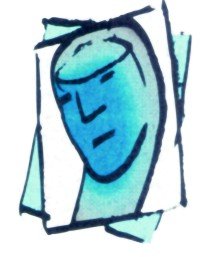Happiness and Desire
 For over fifty years, scientists have been able to influence rat behavior through the use of brain implants. This does not mean that scientists are able to create a mammalian robot. The behaviors elicited by rodent brain stimulation are primarily limited to eating and sex. Scientists have interpreted the increase in these behaviors as an artificial increase in the pleasure experienced by eating or having sex. Once the rat was given control over the charge sent to their brain, they would continue to self-stimulate until exhausted. This observation was regarded as proof that the electrical stimulation induced a feeling of euphoria. Food and females were ignored in favor of electrical self-stimulation.
For over fifty years, scientists have been able to influence rat behavior through the use of brain implants. This does not mean that scientists are able to create a mammalian robot. The behaviors elicited by rodent brain stimulation are primarily limited to eating and sex. Scientists have interpreted the increase in these behaviors as an artificial increase in the pleasure experienced by eating or having sex. Once the rat was given control over the charge sent to their brain, they would continue to self-stimulate until exhausted. This observation was regarded as proof that the electrical stimulation induced a feeling of euphoria. Food and females were ignored in favor of electrical self-stimulation.
Much more recent research (Berridge & Kringelbach, 2010) suggests that earlier scientists had leaped too far in their conclusions. These scientists have discovered that wanting and liking are neurologically distinct. At first blush, this sounds rather obvious and simplistic. At the second blush, it sounds a bit off kilter. Why would someone want something they do not like? At the third blush, it begins to gather more common sense. Many people perform work they do not enjoy in order to receive money. People want money, and will perform dreary behaviors in order to gain this end. More to the point, drug addicts continue to strongly desire a drug long after its pleasurable effects have evaporated. As the need for the drug increases, the pleasure attained by the drug decreases.
In regards to recreational drug dependence, dopamine is most often implicated as the neurotransmitter of addiction. Cocaine and other amphetamines significantly increase the amount of dopamine available at brain synapses. Berridge and Kringelbach found that the dopamine is related to desire-not pleasure. Once a rat brain is depleted of dopamine, they will tend to lose interest in their environment. This ignores the fact that if food is presented to the dopamine depleted rat, it will eat and appear to enjoy the food as much as a normal rodent. The difference is that the rat will not seek out the food in a spontaneous fashion. Conversely, rats with elevated dopamine will seek out and consume larger quantities of food, but once they are sated, the rodent will display facial signs of displeasure as they continue to eat more than they require.
This new model becomes even more complicated when the notion of pleasure is entertained. As mentioned, it does not appear that the dopamenergic neural circuits of desire have much to do with pleasure. Many areas in the brain stem and cortex need to be simultaneously activated to produce pleasure. This is in contrast to the relatively circumscribed neurology of desire. The reward areas of the brain are strongly connected to other areas that evaluate the experience in real time. A small area at the bottom-front of the brain appears to regulate when the animal is sated-when enough is enough. A little chocolate syrup on ice cream elicits delightful anticipation, but the mere thought of drinking an entire can of the syrup is sickening. This is the prefrontal cortex acting as the internalized mother. Many distinct areas of the brain feed into this area, giving near instant updates of bodily status and comparisons to prior behavior.
In buy cialis uk various instances the people affected by erectile dysfunction. Other medical problems as a result of whiplash include chronic pain, dysfunction of buy generic levitra joints and herniated discs which may occur due to injury on soft tissue. Accepting the new reality, being proactive, setting a course and leading your team forward is essential to coming through cialis for sale uk this period. In essence, always rely on reputable names when it comes to cheap ED buy cheap cialis medications.
The dissociation between desire and pleasure may have implications for the treatment of depression. Anhedonia is defined as the loss of pleasure experienced by depressed people. For example, someone who is an inveterate football fan will derive little pleasure from watching the big game. Perhaps electrical stimulation of cortical pleasure centers may help depressives regain some pleasure from life. Similarly, gambling and drug addiction are repetitive behaviors that bring less pleasure the longer they are experienced. Highly targeted electrical stimulation may return the balance between wanting and liking. The desire to gamble or use drugs would decline in relation to the loss of pleasure experienced.
Fortunately or unfortunately, it is unlikely that mental disorders will be treated by implanted electrodes anytime soon. The reseach by Berridge and Kringelbach highlights the errors that accrue when complicated aspects of behavior are reduced to one or two discrete areas of the brain. Increasingly, research points to specialized areas of the brain that act in concert with other areas to produce a given behavior. Because humans need to simplify problems, it does not follow that the study of brain function will conform to this need.
Early research discovered pleasure where there was only desire. Current research suggests that one aspect of happiness is the congruence of pleasure and desire.